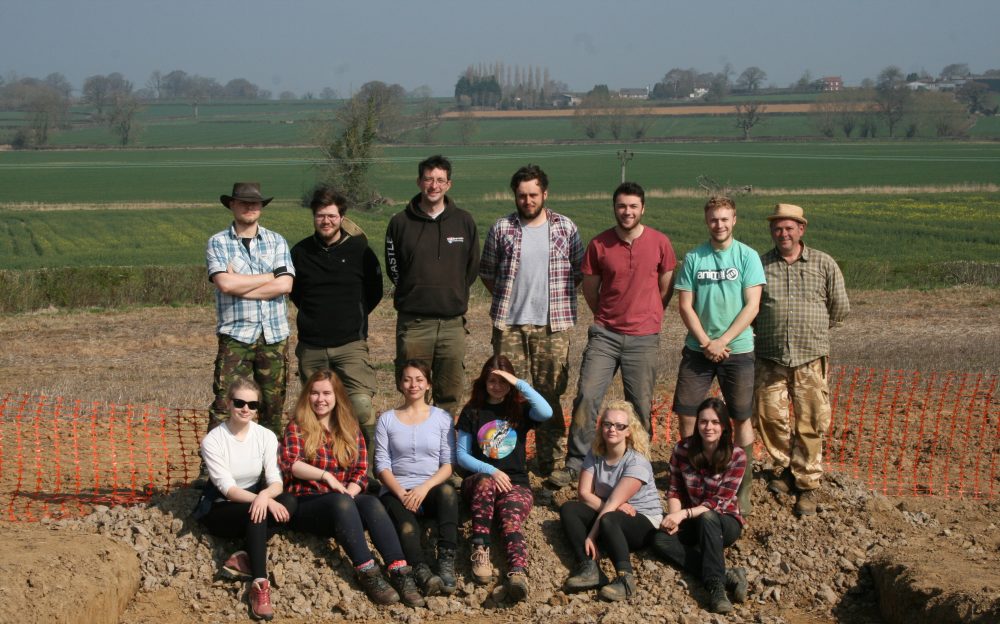The team had another hard day’s work on site today but managed to be incredibly productive, getting their teeth sunk into the archaeology.
Our first job today was to transport the fencing to site, which was a considerable task. With some help from James Pullen (the land owner), Elliot, Holly, Kevin, James S, James I, Chris and Henry were able to move a huge amount of fencing to site, where the rest of the team unloaded it. (below)
Meanwhile, James and Andy got on with the important task of machine watching while our digger lifted the topsoil off of Trench A.
Ski also returned to site today and was able to uncover no less than 8 copper-alloy coins in a morning! All of these coins appear to be of fourth century date: we have a Soli Invicto Comiti of the early fourth century and a coin of the usurper Magnentius (AD350-353)
Another interesting find from site was a Roman roof tile (below).
Before we broke for lunch, we were also able to locate what we believe to be one of the villa’s walls, leading Holly, Charlotte, Kevin, Hayley and Henry to try and find where it leads us (below).
While part of the team was occupied by the trench, the rest of us set about constructing the fencing to surround the site and putting up our on-site tent, which we use as a site office.
At the end of the day we all enjoyed spaghetti bolognese for tea and looked forward to a day of discovery tomorrow!













